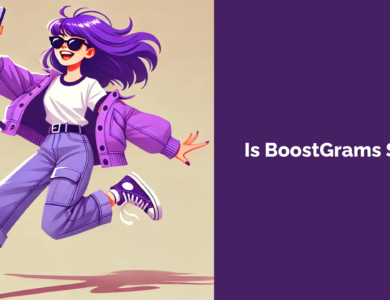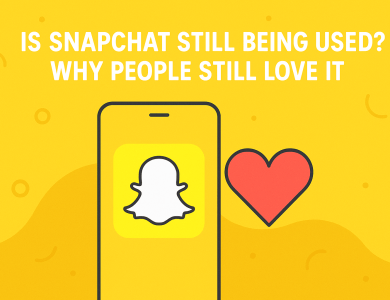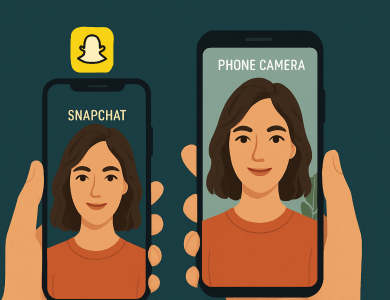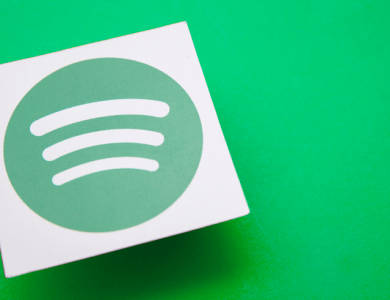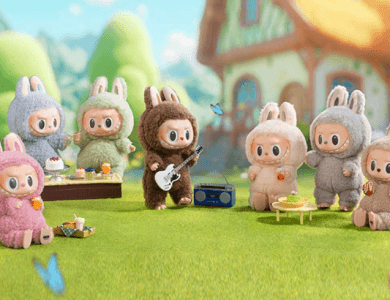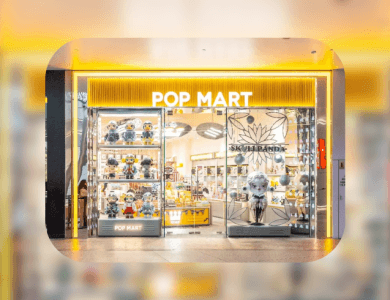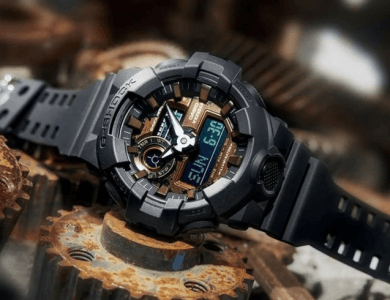
If you’re a gamer who’s been asking “is Death Stranding 2 worth it?”, you’re not alone. Hideo Kojima’s original Death Stranding (2019) was a famously divisive game – some players fell in love with its unique “post-apocalyptic delivery man” gameplay and deep story, while others found it slow and bewildering. Now that Death Stranding 2: On the Beach has arrived on PS5 in mid-2025, gamers everywhere are wondering if this ambitious sequel delivers the goods (pun intended) or if it’s just another slog through the mud with a baby strapped to your chest. Let’s break down what’s new, what’s improved, and whether Death Stranding 2 is worth your time and money as a gamer.
Contents
Why Gamers Are Asking If It’s Worth It
To understand is Death Stranding 2 worth it for gamers, we need to recall what made the first game so polarizing. In Death Stranding, you play as Sam Porter Bridges (portrayed by Norman Reedus) trekking across a desolate America, delivering packages and connecting isolated communities. The gameplay was intentionally slow and meditative – a “walking simulator” with ghostly monsters, if you will. Many gamers either loved the zen-like delivery quests or hated the repetitive fetch quests. Even Kojima himself noted that during Death Stranding 1’s testing, only about 4 out of 10 people loved the game while the other 6 “would say it was a terrible game”.

With such a mixed legacy, it’s no surprise that gamers are curious – is Death Stranding 2 worth it? Will it win over those who were on the fence, and will it satisfy fans of the original?
The good news is that early signs point to Death Stranding 2 being a big step up. In fact, pre-release playtesters were almost unanimously positive about the sequel – a stark contrast to the split opinions on the first game. The game was released on June 26, 2025 to “universal acclaim” from critics, even earning a spot as one of the highest-rated games of the year so far. That’s a strong hint that Kojima has refined the formula. But let’s dig into the specifics: what’s changed in gameplay and story, and does it address the concerns gamers had with the first title?
Gameplay: What’s New in Death Stranding 2 vs. the Original
One of the biggest questions for gamers is how the gameplay of Death Stranding 2 compares to the first. The original was all about balancing packages on your back, trudging over mountains, and occasionally clumsy combat. Death Stranding 2: On the Beach preserves the core idea – you’re still a courier in a post-apocalyptic landscape delivering cargo – but it evolves the gameplay in significant ways to make it more engaging.
Vehicles and Traversal: In the first game, vehicles came later and you spent a lot of time on foot early on. In DS2, vehicles are unlocked early, and you can use them to travel faster from the get-go. Whether you’re riding a futuristic bike or driving a truck, it certainly beats hiking everywhere. Plus, vehicles can be customized now – you can slap on extra battery packs for longer trips or even add gun turrets for defense.
Eventually, as you progress, you can construct a monorail network to quickly shuttle large amounts of cargo across colonies. (Yes, you read that right: Kojima basically lets you build a sci-fi monorail system. Thomas the Tank Engine would be proud.)
World Challenges: The sequel’s world isn’t just the same old rainy U.S. landscape. This time you’ll be exploring new regions like Australia and Mexico in two large open-world maps, which adds variety in biomes and scenery. But with new lands come new obstacles: Death Stranding 2 introduces dynamic environmental hazards. You’ll face natural disasters like earthquakes and sandstorms that can alter the terrain and force you to change your delivery routes on the fly. Just when you thought you had a nice path plotted out, boom – an earthquake might drop a canyon in front of you. It keeps you on your toes (and sometimes on your butt if Sam falls over).
More Freedom in Combat (and Stealth): Perhaps the biggest complaint about DS1 from action-loving gamers was the minimal combat. Death Stranding 2 clearly heard this feedback. Combat is much more central now, though still optional. Sam now has a much larger arsenal of weapons – from non-lethal options to sniper rifles, assault rifles, grenade launchers, and more – if you decide you want to go in guns blazing. You can also engage in Metal Gear Solid-style stealth takedowns or avoid fights entirely by taking alternate routes. The key here is player choice: you’re not forced to fight, but if you enjoy it, the game provides far deeper combat mechanics than the first. You can even put down your backpack to move more nimbly in combat or sneaking (imagine gently setting aside your Amazon packages so you can karate-chop a bandit – very considerate!). Overall, Death Stranding 2 promises more freedom in how to overcome obstacles, whether through brains, brawn, or just bypassing danger altogether.
Progression and Skills: In the original game, Sam got better mainly through player skill and a few upgrades. The sequel adds a proper skill progression system via the Automated Porter Assistant System (APAS), essentially a skill tree. As you deliver and explore, you can unlock enhancements in categories like combat, stealth, and “delivery” skills that make Sam more effective. For example, the more deliveries you complete, the better Sam gets at balancing loads, etc. It’s a nice RPG-lite element that gives a sense of growth and reward for whatever playstyle you favor.

In short, the gameplay in Death Stranding 2 is a more refined and gamer-friendly experience. It keeps the unique delivery and exploration core intact but layers on more vehicles, more gadgets, more action, and more dynamic world events. One IGN reviewer even called it “a more accomplished achievement in nearly every facet” compared to the first game. If you found yourself wishing the original had just a bit more game in its gameplay, the sequel might pleasantly surprise you.
Quick Comparison: Death Stranding vs Death Stranding 2
To sum up the gameplay and setting differences, here’s a quick side-by-side comparison:
| Aspect | Death Stranding (2019) | Death Stranding 2: On the Beach (2025) |
|---|---|---|
| Setting | Post-apocalyptic USA (reconnecting America) | Post-apocalyptic Mexico and Australia (new continents to connect) |
| Protagonist | Sam Porter Bridges (Norman Reedus), lone porter | Sam Porter Bridges (Norman Reedus) returns, joined by new allies |
| Core Gameplay | Hiking with packages, ladder and rope traversal, minimal combat, asynchronous online world-building (roads, etc.) | Deliveries with vehicles early on, extensive cargo customization, dynamic terrain (quakes, weather), rebuilding infrastructure (roads, monorails), skill tree progression |
| Combat | Limited combat, basic weapons (if any), focus on avoiding BTs and human bandits. | Expanded combat options (guns, stealth takedowns), larger enemy variety, can choose fight or flight. Combat not mandatory but much improved. |
| Enemies | Beached Things (invisible ghost monsters), MULEs (bandit porters), a few boss creatures. | BTs return (now some can see you!), plus human terrorists, and even “ghost mechs” – yep, supernatural robot enemies roam Australia. More boss encounters integrated into story. |
| Tone & Pace | Slow, experimental, often tranquil but could feel tedious to some. Story delivered in heavy cutscenes. | Still deliberate pace, but with more action spikes and variety. Retains the weird, philosophical tone, but more player agency breaks up long quiet stretches. |
Story and World: A New Strand in the Saga
Okay, so the gameplay got beefed up – but what about the story? Death Stranding was known for its rich but head-scratching narrative involving the living and the dead, and an all-star cast (Norman Reedus, Mads Mikkelsen, Léa Seydoux, etc.) in a bizarre sci-fi tale. Death Stranding 2 continues that tradition with returning characters and new mysteries, while exploring a new region and themes.
Setting & Continuation: The sequel is set 11 months after the events of the first game. Sam has successfully reconnected the United Cities of America via the “Chiral Network” at the end of DS1. In DS2, the action moves abroad – primarily to Australia (and parts of Mexico), places we never saw in the first game. Sam is called out of retirement for a new mission: to connect isolated survivors in these regions (via a new Chiral network extension) and ultimately save humanity from a looming extinction. So yes, once again you’re carrying the future of humanity on your back (along with 50 kilos of cargo). No pressure.
Familiar Faces & New Characters: Fans will be happy to know Sam Porter Bridges is back, still portrayed by Norman Reedus. He’s a bit older, possibly a bit wiser, but definitely still lugging packages across dangerous terrain. Fragile (Léa Seydoux), the enigmatic courier from the first game, also returns and plays a key role in the story.
Even the villainous Higgs (Troy Baker) makes a comeback appearance– which is intriguing if you remember how the last game ended. They’re joined by a new cast of characters, including one played by actress Elle Fanning. (Kojima loves to blend Hollywood talent into his games – expect more quirky, moody cutscenes with high-caliber acting.) Without spoiling too much, the new story delves into what’s happening in the rest of the world after the first Death Stranding event. For example, there are strange “plate gates” – portal-like phenomena linking far-apart locations (this is how Sam can actually travel to Australia in a reasonable timeframe). Of course, things don’t go smoothly – there are new threats, tragic twists, and plenty of cryptic Kojima-style storytelling along the way.
Themes and Tone: Kojima actually reworked the narrative of Death Stranding 2 after witnessing the real-world COVID-19 pandemic, aiming to reflect some of its impact on society. The theme of connection in isolation is still central, but now there’s an added layer of how technology and automation affect humans. In the game’s world, an AI delivery network called APAS has made human porters largely obsolete– raising the question of how people stay connected when machines do all the connecting for them. It’s a timely theme, and if Death Stranding 1 was ahead of its time in 2019 with its focus on isolation, On the Beach lands at a moment when we’ve all thought about those issues, which makes the story hit differently.
As one reviewer noted, “if Death Stranding was ahead of its time then, On the Beach arrives at a perfect moment.” The narrative is still full of mystery, symbolism, and the trademark Kojima weirdness (expect dreamlike sequences and probably an explanation that involves extinction entities and metaphysical beaches). But importantly, it looks like the sequel’s story resonated with players and critics more strongly, perhaps because we’re more primed to appreciate its messages now.
A Dash of Humor in the Apocalypse
One thing that might surprise you is that Death Stranding 2, while still a serious story, isn’t afraid to have a little fun with itself – and neither are we. The game’s tone can be dry and somber, but there are moments of quirky humor (often in the form of Easter eggs or absurd situations – remember Sam peeing to grow a mushroom in DS1?). In DS2, Kojima has embraced the idea that games should be enjoyable and even a little silly at times. Case in point: if a boss fight is driving you nuts, the game literally offers a “Pretend You Won” button to skip the boss with no real penalty. That’s right – the game basically says “Hey, we know you’re here for the story and vibes, so if you don’t want to wrestle with this giant whale-ghost-boss for the fifth time, just skip it.” It’s a small quality-of-life feature, but it shows Kojima winking at the player and saying it’s okay to just enjoy the ride.
Our take? This slightly humorous, player-friendly approach makes the whole experience more worth it. It’s as if Kojima is acknowledging both the hardcore fans and the skeptics. Whether you get a chuckle from an absurd mail-order email in Sam’s inbox, or you laugh at yourself after tipping over for the tenth time because you had to carry 20 packages at once, Death Stranding 2 knows it’s a weird game and embraces that. For gamers, these moments of levity can be the difference between a game feeling like a slog and it feeling like an adventure with a friend who has a wry sense of humor.
Final Verdict: Is Death Stranding 2 Worth It?
Time to address the big question head-on: is Death Stranding 2 worth it? For fans of the first game, the answer is a resounding yes – it’s essentially Death Stranding on steroids (or maybe on Monster Energy drinks, considering Sam’s canonical beverage of choice). It expands and improves on nearly every aspect: the story goes deeper and broader, the gameplay is richer with more options, and the world is larger and more varied. If you loved the chill vibes and unique concept of connecting people in DS1, you’ll likely find DS2 to be an even more rewarding journey. It feels like Kojima Productions really doubled down on what worked and fixed a lot of what didn’t.

But what if you didn’t love the original? Here’s where things get interesting. If you bounced off Death Stranding 1 because it was too slow or lacked traditional “fun” gameplay elements, Death Stranding 2 makes a strong case to win you over. The added action, more frequent rewards (like getting vehicles early, woo!), and greater freedom might keep you engaged this time around. Critics who once dismissed the first game have acknowledged the sequel as “a more accomplished achievement in nearly every facet”.
The fact that DS2 has gotten widespread acclaim suggests that it’s converting some former skeptics. Even Kojima was a bit surprised that people found the game more broadly appealing – he joked that he wished it was “a bit more controversial” because he isn’t used to universal praise.
That said, Death Stranding 2 is still not going to be everyone’s cup of tea. At its heart, it’s still a story-focused, slow-burn experience. You’re still delivering packages in a melancholy world; the game just gives you more ways to do it and a richer context. If you absolutely hated the core concept of the first game (“Ugh, why am I literally being a postman in the apocalypse?”), DS2 might not completely change your mind. It’s not suddenly an ultra-fast-paced shooter or a traditional open-world action game – it remains gloriously strange. However, if you were on the fence, or if the improvements sound intriguing, I’d say it’s worth giving the sequel a shot. The sheer quality of execution is high, with gorgeous graphics, phenomenal music, and a story that’s as thought-provoking as it is off-the-wall.
In conclusion, Death Stranding 2 is worth it for most gamers who appreciate something different. It’s a game that asks you to trust it – to immerse yourself in its world and vibe with its unique rhythm. If you do, you’ll be rewarded with an experience that’s unlike anything else, mixing high-production cinematic storytelling with gameplay that can be oddly addictive (you might find yourself obsessing over optimizing delivery routes or building that next bridge for fellow players). And if nothing else, Death Stranding 2 is worth it just for the fact that it’s a bold, creative sequel that actually learns from its predecessor. How often do we see that in big franchises?
So grab your Strand gear, secure your cargo, and don’t forget your sense of humor. Is Death Stranding 2 worth it? For a gamer looking for a one-of-a-kind adventure – absolutely yes. Just be ready to answer one question for yourself: Are you worth your weight in chiral crystals? 😉 (Sam Porter Bridges certainly thinks so.)

